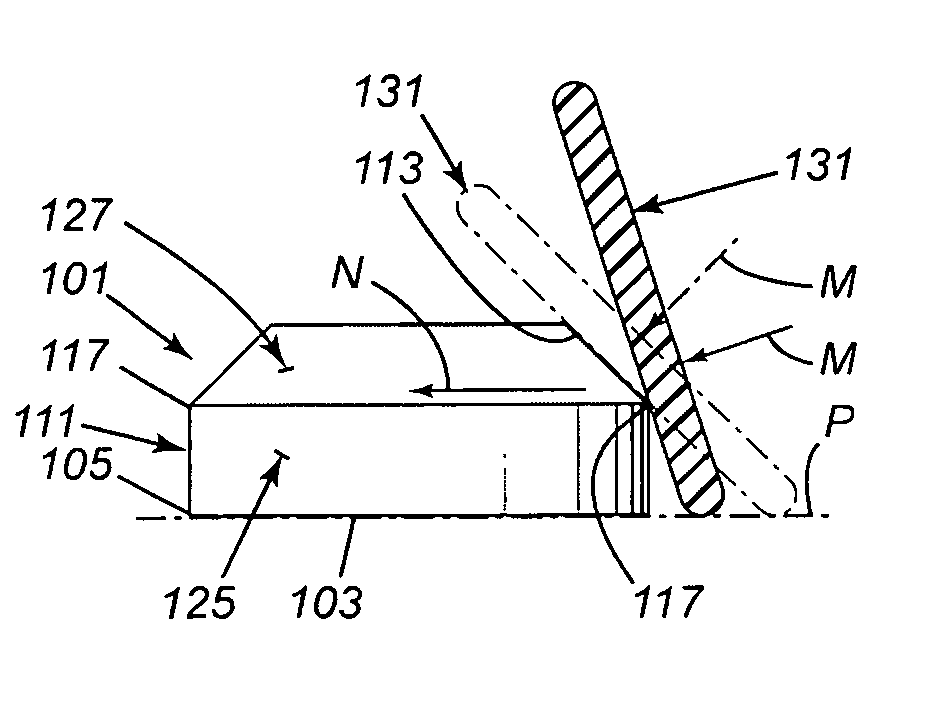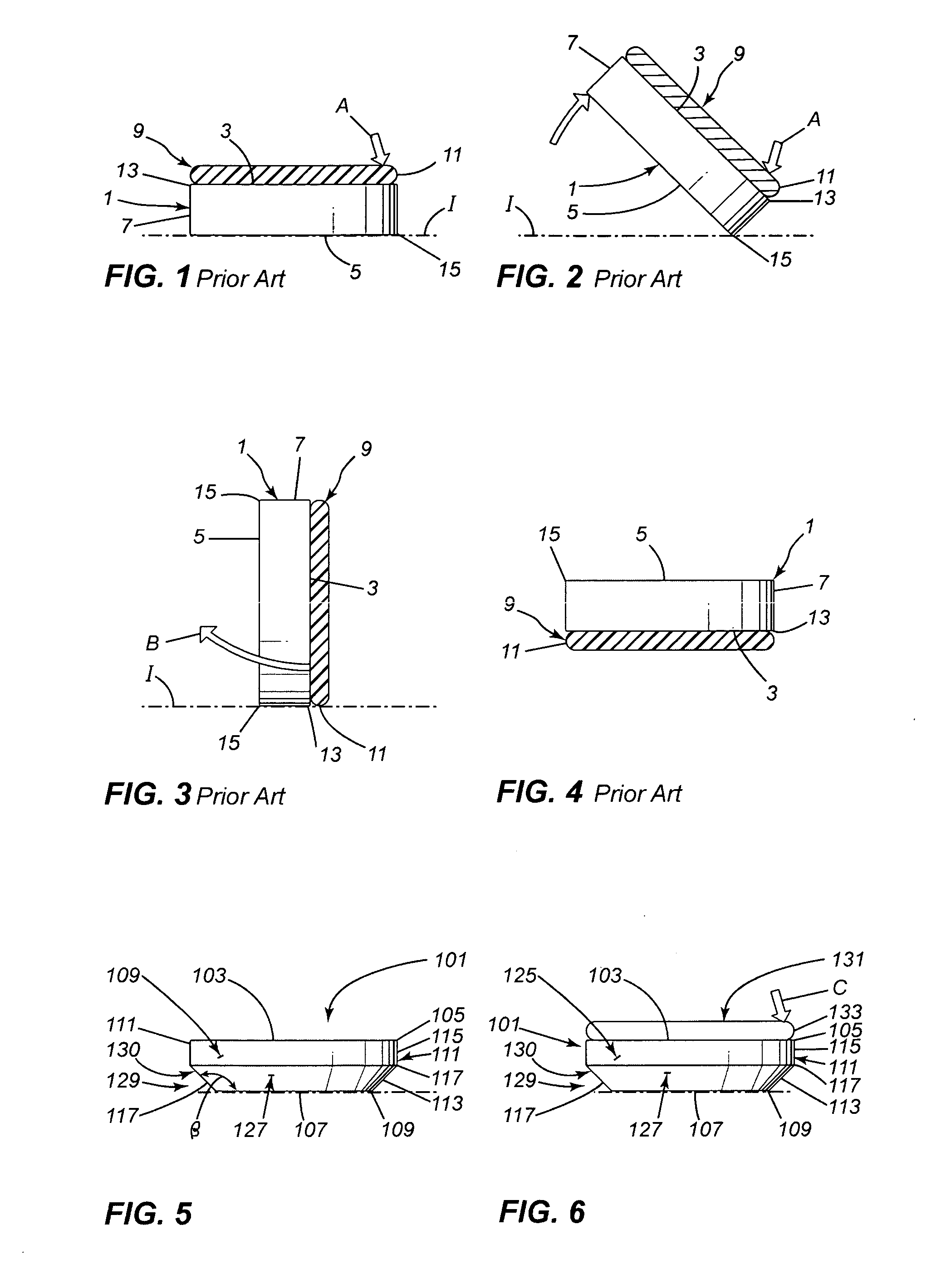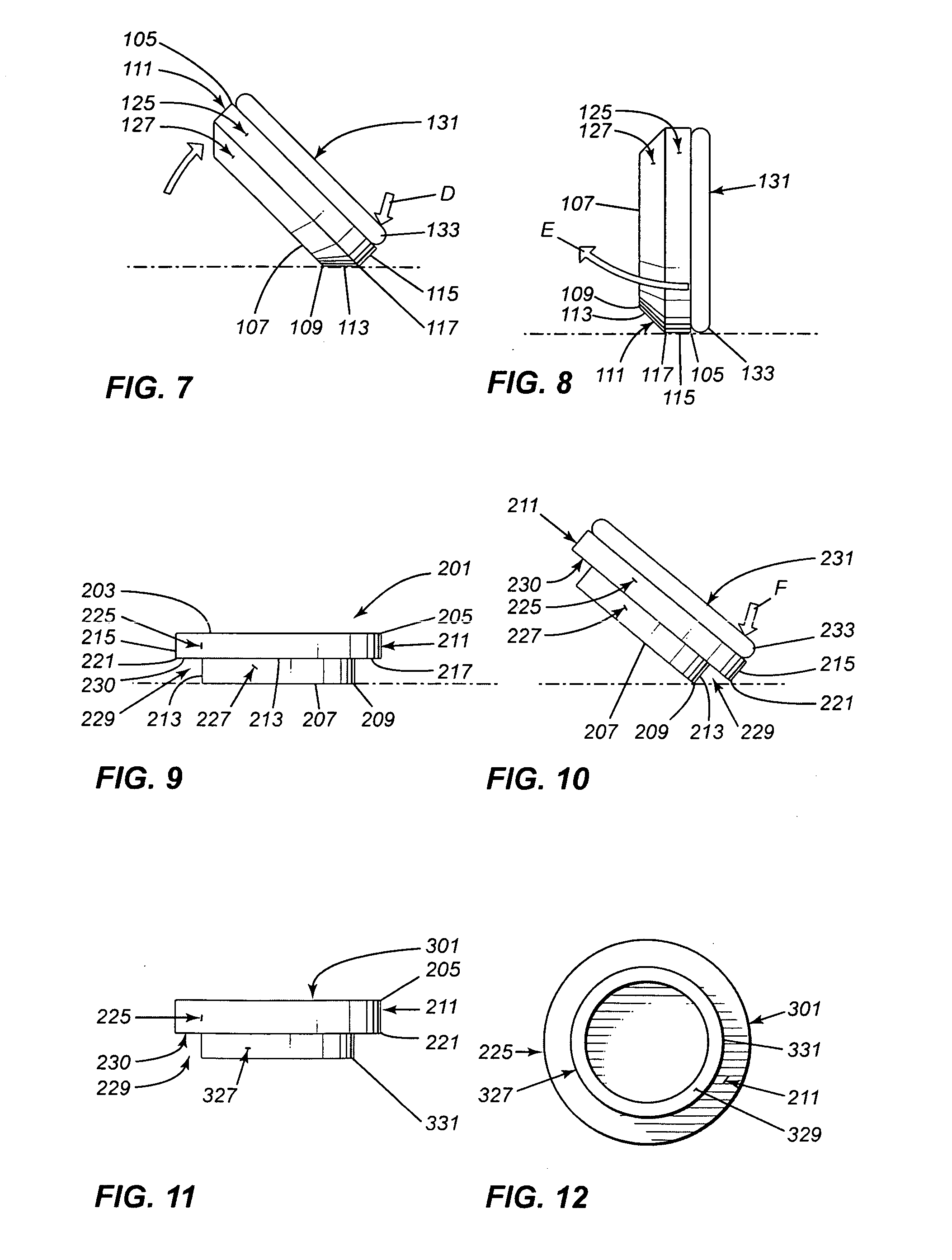Practice hockey puck
- Summary
- Abstract
- Description
- Claims
- Application Information
AI Technical Summary
Benefits of technology
Problems solved by technology
Method used
Image
Examples
Embodiment Construction
[0030]In the prior art, an ordinary hockey puck 1, as shown in FIGS. 1 to 4, is a cylindrical disk three inches in diameter and one inch thick having a top circular surface 3 and a parallel bottom circular surface 5. A cylindrical side surface 7 joins the top and bottom surfaces 3, 5. To pick up the puck lying on the ice ‘I’ with his hockey stick, a player first places the front of the blade 9 of his stick flat on the top surface 3 of the puck 1. Through the handle of the stick, the player then applies pressure, as shown by the arrow ‘A’, through the bottom edge 11 of the blade 9 to the top of the puck 1 adjacent its top edge 13 as shown in FIG. 1. The pressure is applied mainly downwardly but also slightly outwardly in a manner tending to rotate the puck about its bottom edge 15, as shown in FIG. 2, to sit on its side surface 7 with the blade 9 now vertical and still adjacent the top surface 3 of the puck as shown in FIG. 3. The blade 9 of the stick is then used to sweep the upstan...
PUM
 Login to View More
Login to View More Abstract
Description
Claims
Application Information
 Login to View More
Login to View More - R&D
- Intellectual Property
- Life Sciences
- Materials
- Tech Scout
- Unparalleled Data Quality
- Higher Quality Content
- 60% Fewer Hallucinations
Browse by: Latest US Patents, China's latest patents, Technical Efficacy Thesaurus, Application Domain, Technology Topic, Popular Technical Reports.
© 2025 PatSnap. All rights reserved.Legal|Privacy policy|Modern Slavery Act Transparency Statement|Sitemap|About US| Contact US: help@patsnap.com



